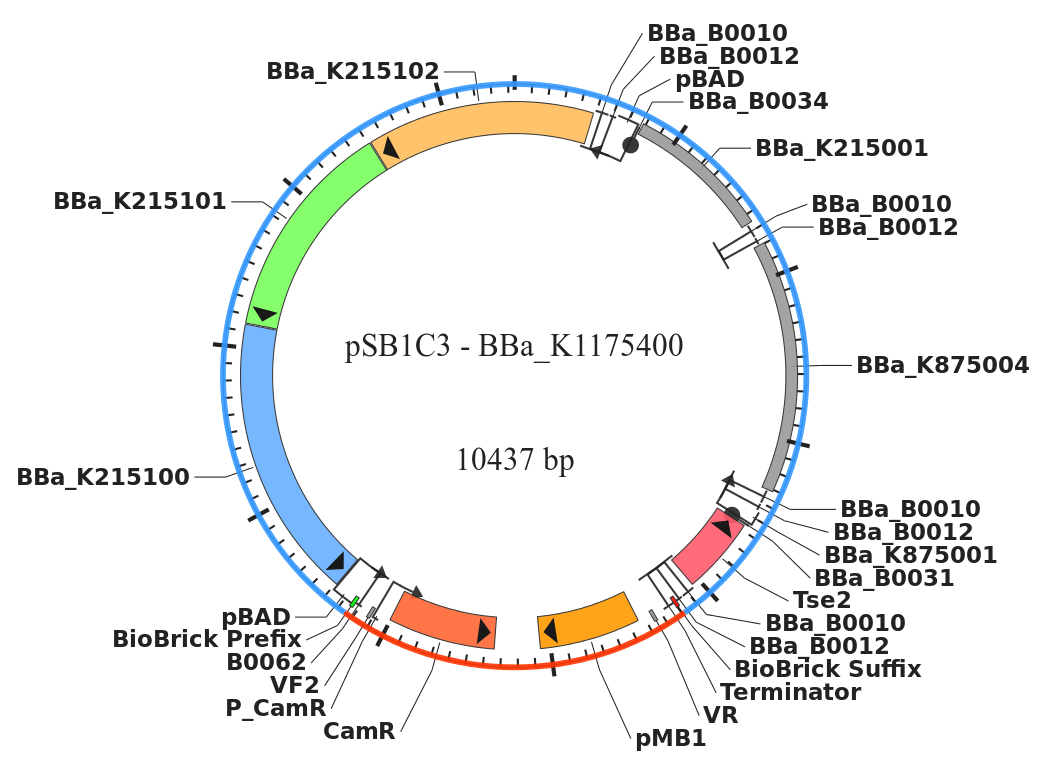Team:WLC-Milwaukee
From 2013.igem.org
(Difference between revisions)
Mwmortensen (Talk | contribs) |
Mwmortensen (Talk | contribs) |
||
| Line 40: | Line 40: | ||
<h1>Our Project</h1> | <h1>Our Project</h1> | ||
| - | < | + | <img src="https://static.igem.org/mediawiki/2013/2/2a/WLC-EcoliNissle1917.jpg" align="right" width=""> |
| - | |||
| - | |||
| - | |||
| - | |||
| - | |||
| - | |||
| - | |||
| - | |||
| - | |||
| - | |||
| - | |||
| - | |||
| - | |||
| - | |||
<ul><li><b>Economic mobility</b>: | <ul><li><b>Economic mobility</b>: | ||
The cellulolytic probiotic strain that we are designing would be ideal for providing increased economic benefit and mobility to the underpriviledged populations that are the target individuals for this product. This would increase their economic powere by increasing the bioavailable resources that were once unavailable. This would do so by increasing nutrition in the cattle thus increasing the market value of the livestock, increasing the revenue available per capita. Also the increase in caloric availability could also apply to carbohydrate food sources thus allowing for an increased self sufficiency and, hopefully, the formation of a surplus that could enter into the world market. It is this entry into the world market that could facilitate a upward movement of under developed countries.</li> | The cellulolytic probiotic strain that we are designing would be ideal for providing increased economic benefit and mobility to the underpriviledged populations that are the target individuals for this product. This would increase their economic powere by increasing the bioavailable resources that were once unavailable. This would do so by increasing nutrition in the cattle thus increasing the market value of the livestock, increasing the revenue available per capita. Also the increase in caloric availability could also apply to carbohydrate food sources thus allowing for an increased self sufficiency and, hopefully, the formation of a surplus that could enter into the world market. It is this entry into the world market that could facilitate a upward movement of under developed countries.</li> | ||
Revision as of 22:45, 27 September 2013


Our Project

- Economic mobility: The cellulolytic probiotic strain that we are designing would be ideal for providing increased economic benefit and mobility to the underpriviledged populations that are the target individuals for this product. This would increase their economic powere by increasing the bioavailable resources that were once unavailable. This would do so by increasing nutrition in the cattle thus increasing the market value of the livestock, increasing the revenue available per capita. Also the increase in caloric availability could also apply to carbohydrate food sources thus allowing for an increased self sufficiency and, hopefully, the formation of a surplus that could enter into the world market. It is this entry into the world market that could facilitate a upward movement of under developed countries.
- Industrial application: The use of the cellulolytic E coli nissle 1917 would increase the availability of glucose for industrial application by opening a new avenue for using the renewable and abundant environmental cellulose. This could lead to an increased industrial self sufficiency by decreasing dependence on non renewable resources (i.e fossil fuels) or repurposed resources (i.e. corn and rice). In the case of fossil fuel, the world market depends on it due to its high demand but with the increased amount of bioavailable glucose there would be an increased availability of ethanol for use as a renewable fuel source. In addition with an increase in bioavailable glucose the world will be able to move away from high fructose corn syrup, which has been linked to an increased obesity rate in America, and towards high glucose syrup. This would mean a decreased reliance on corn allowing its use in other industrial or economic applications. All in all the use of a cellulolytic bacteria in industry would allow for a repurposing of what was once considered “trash” and instead turn it into a potential “treasure” using it as a resource, recycling what was once useless into something that can now be considered a reliable and renewable resource.
- Humanitarian efforts: Through the use of a known probiotic strain E. Coli Nissile 1917 the cellulolytic genes studied will be able to be used safely and effectively in human subjects. The effect of the cellulolytic probiotic strain would be to increase the caloric intake in the individuals who live as sustenance farmers, refugees, and in areas that do not provide enough agricultural means so as to provide sufficient calories for the population housed in the area. This increase in caloric intake would mean an increase in self sufficiency in third world countries and a decrease in economic strain for the supporting nations. The increase in self sufficiency would mean an increase in economic surplus within the country in question, eventually leading to an increase in the rate of development in these countries.
 "
"









